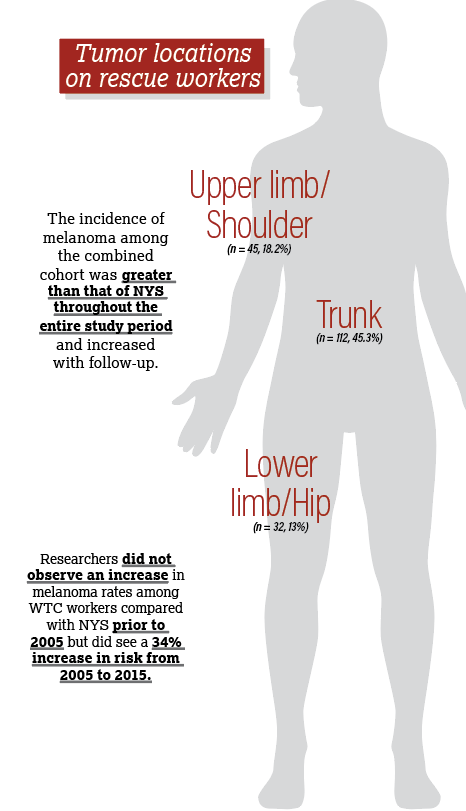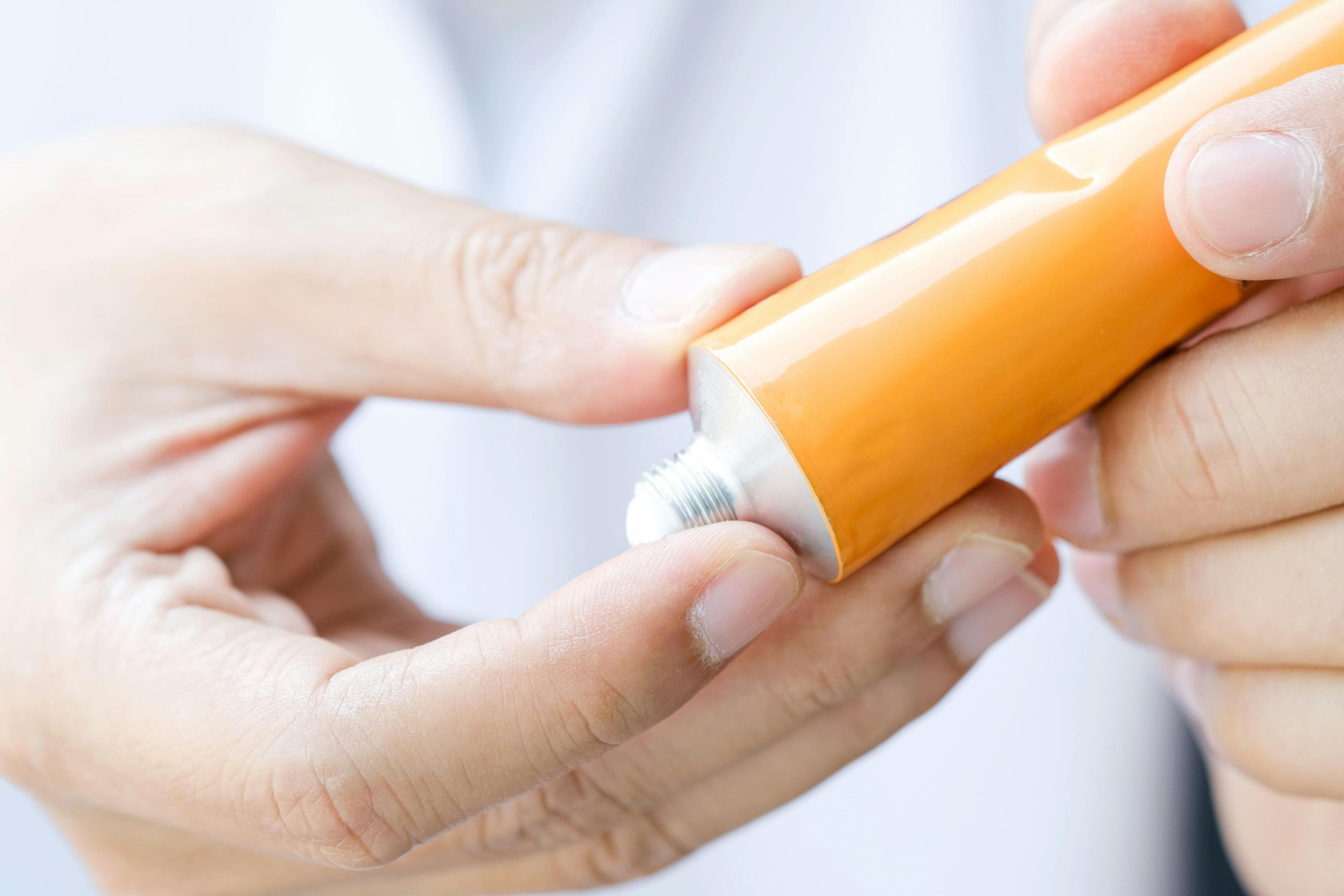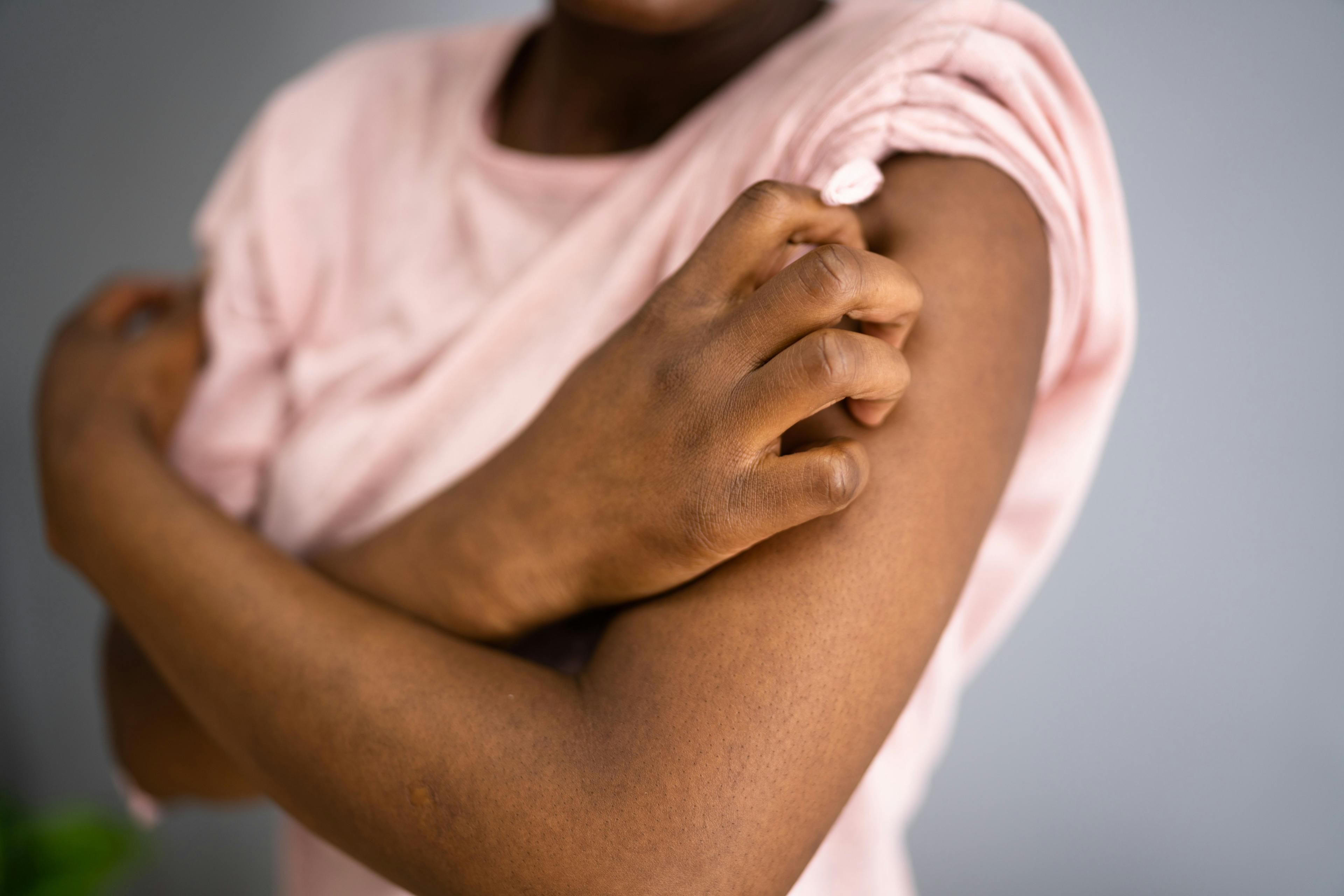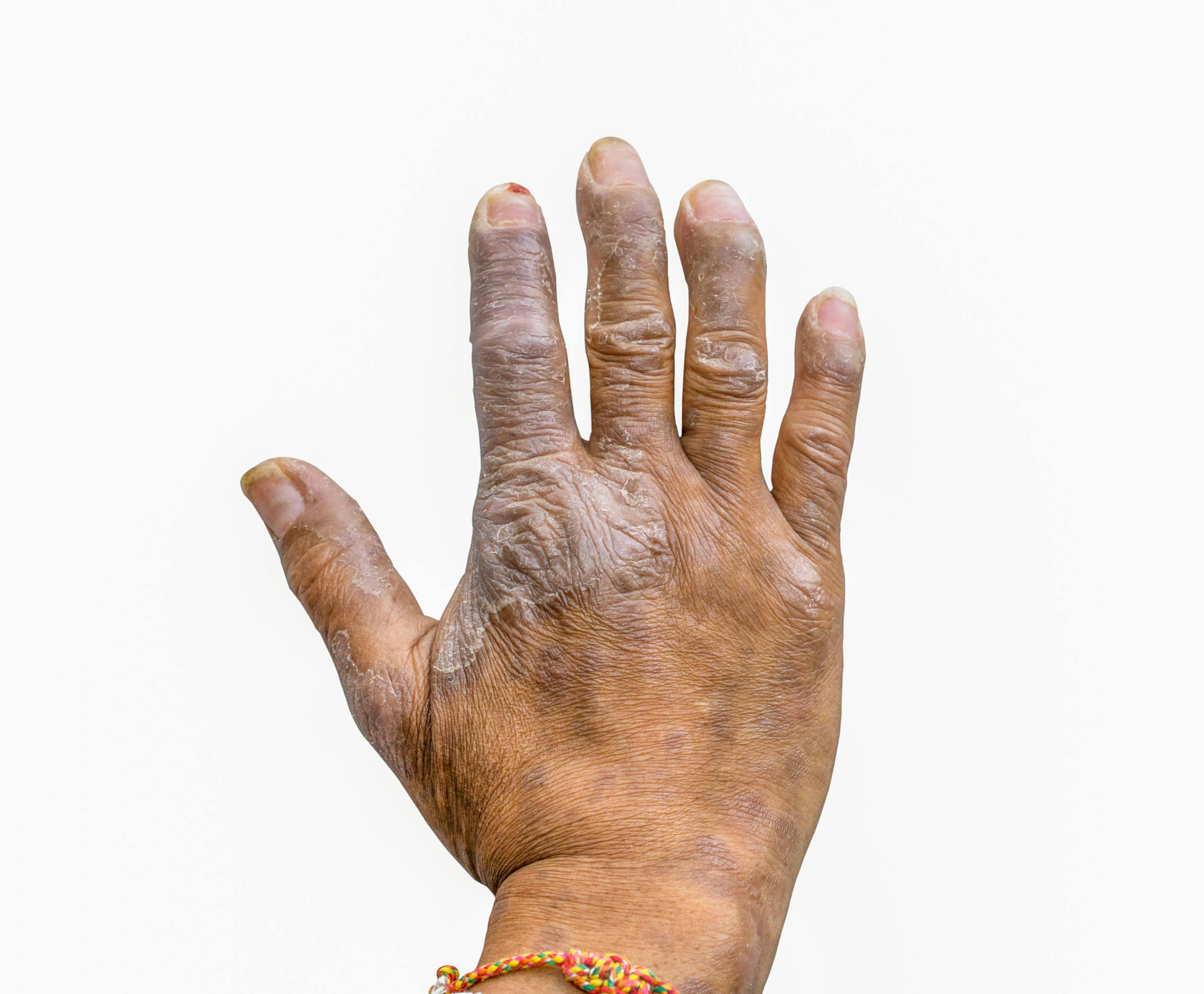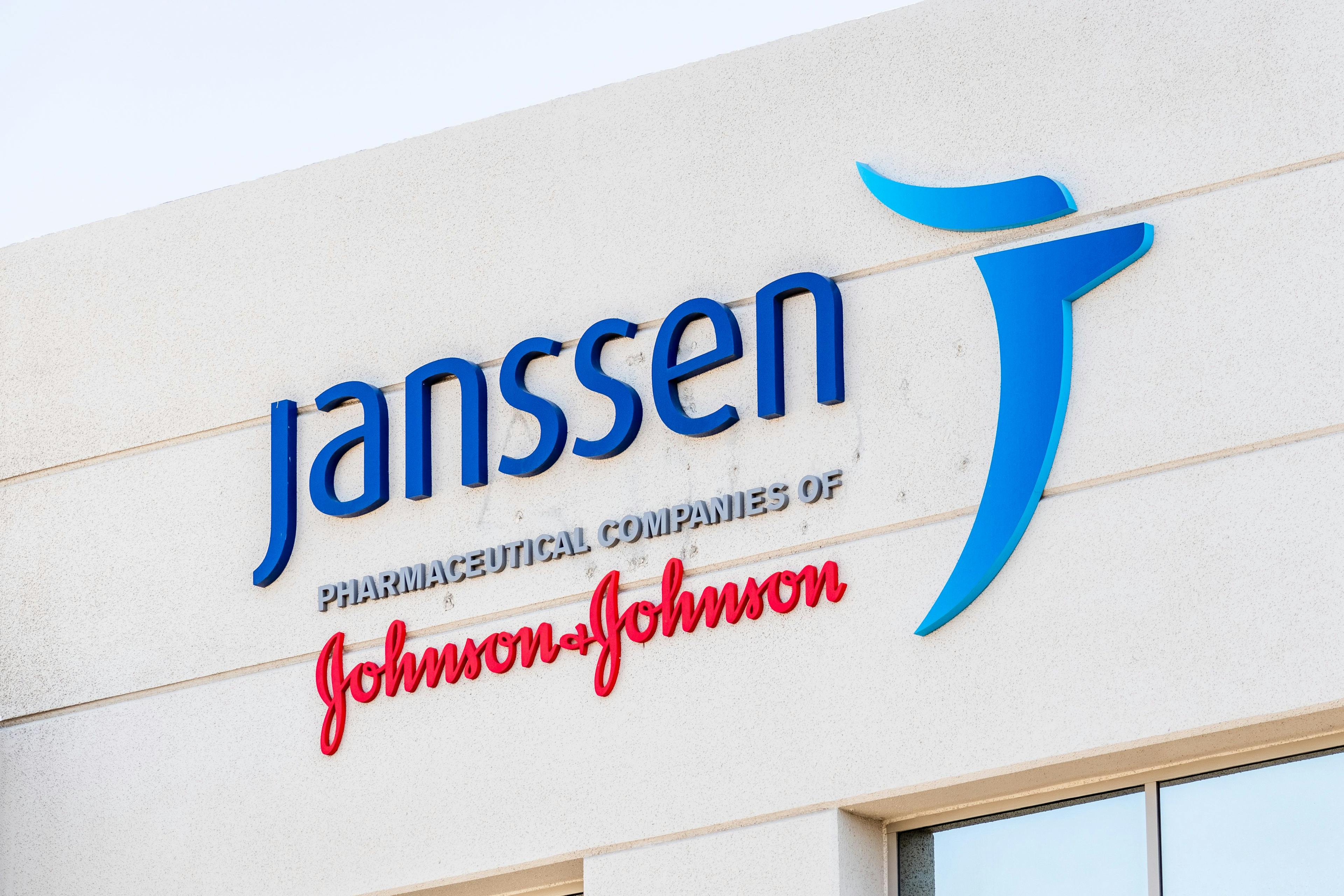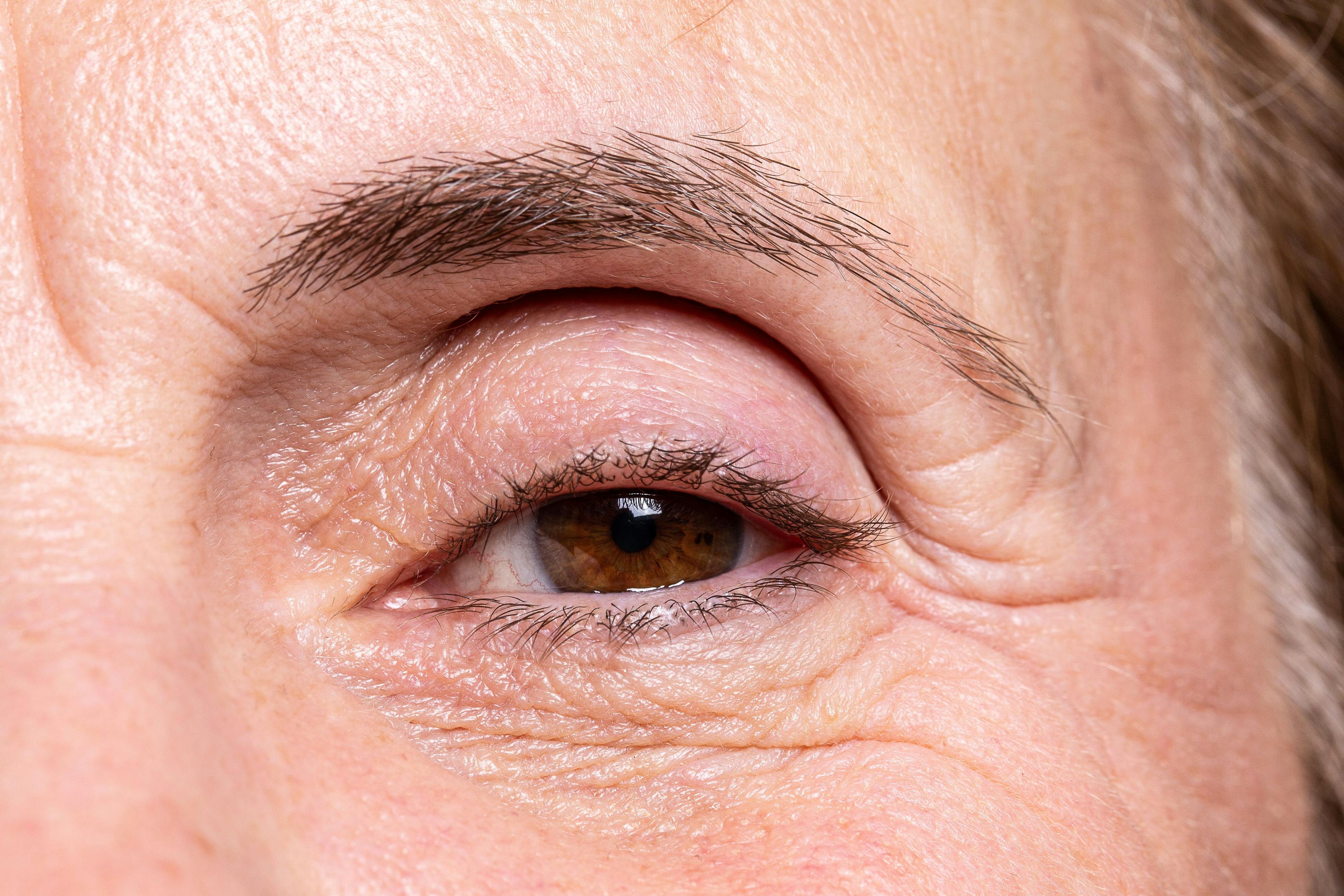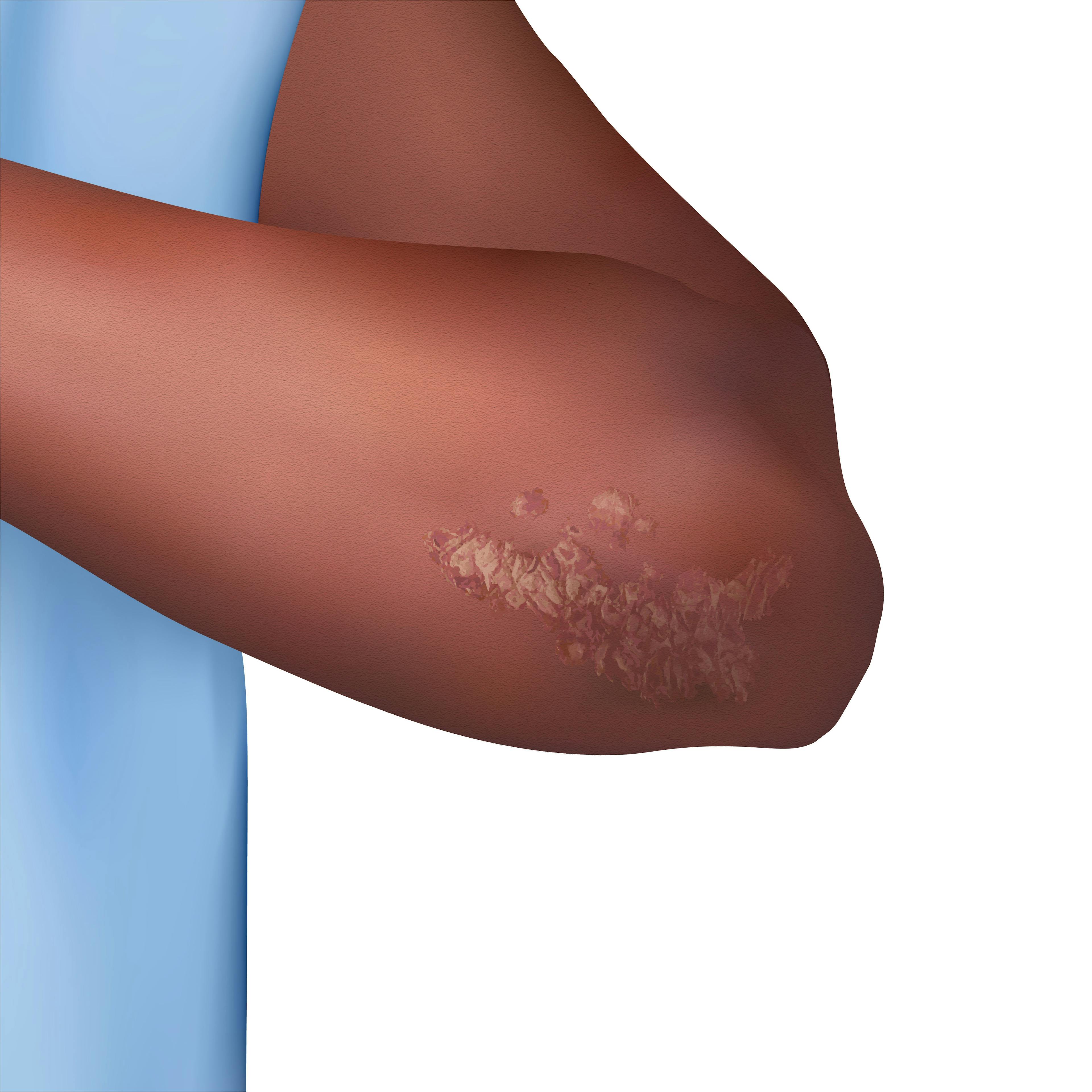- Acne
- Actinic Keratosis
- Aesthetics
- Alopecia
- Atopic Dermatitis
- Buy-and-Bill
- COVID-19
- Case-Based Roundtable
- Chronic Hand Eczema
- Chronic Spontaneous Urticaria
- Drug Watch
- Eczema
- General Dermatology
- Hidradenitis Suppurativa
- Melasma
- NP and PA
- Pediatric Dermatology
- Pigmentary Disorders
- Practice Management
- Precision Medicine and Biologics
- Prurigo Nodularis
- Psoriasis
- Psoriatic Arthritis
- Rare Disease
- Rosacea
- Skin Cancer
- Vitiligo
- Wound Care
Publication
Article
Dermatology Times
World Trade Center 9/11 Rescue Workers Show Higher Risk of Melanoma
Author(s):
Rescue workers had a higher rate of malignant melanoma between 2005 and 2015 compared the general population of New York State.
Researchers wanted to better understand the risk of developing malignant melanoma for rescue workers exposed to the toxins released due to the September 11, 2001, attacks at the World Trade Center (WTC) in New York, New York.1 Beyond the immediate fatalities, the destruction released toxic substances such as asbestos, benzene, chromium, dioxins, and polychlorinated biphenyls.1,2 From the morning of the attacks and continuing 9 or more months afterward, an estimated 90,000 first responders and rescue, recovery, and cleanup workers were at the site.2
WavebreakmediaMicro/AdobeStock
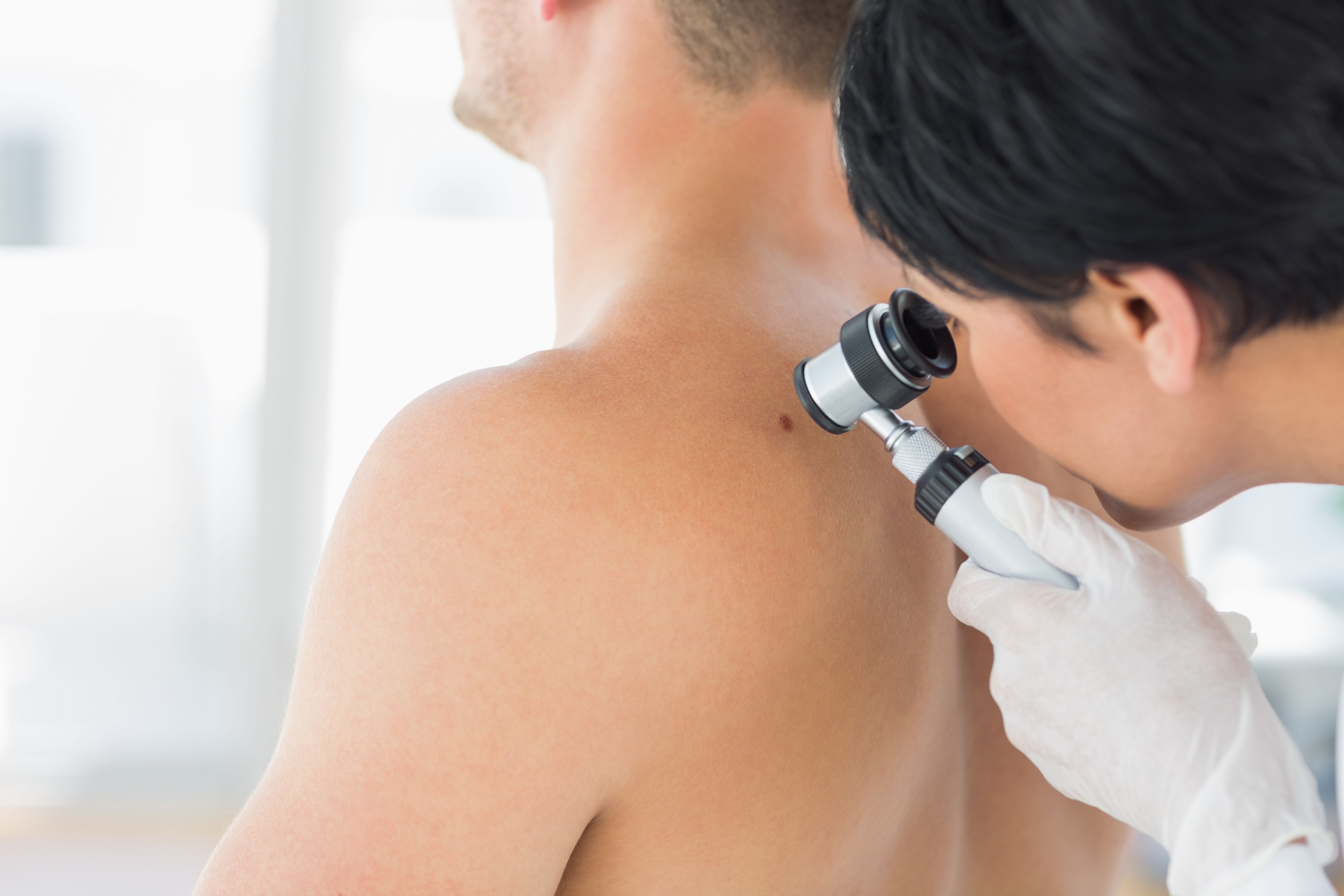
Amy Spizuoco, DO, FAOCD, board-certified dermatologist, dermatopathologist, associate clinical instructor in the department of dermatology at the Icahn School of Medicine at Mount Sinai in New York, New York, and Dermatology Times Editorial Advisory Board member, said, “Studies have shown 9/11 rescue workers had an increased rate of malignant melanoma between 2005 and 2015 compared [with the] New York State [NYS] general population. Typically, malignant melanoma is associated with UV radiation; however, some studies show a statistically significant increase in 9/11 rescue workers.”
Three cohorts of WTC-exposed rescue and recovery workers—the Fire Department of the City of New York (FDNY), World Trade Center Health Program General Responder Cohort, and World Trade Center Health Registry—have shown an increased incidence of malignant melanoma.1,2 Researchers wanted to further explore the time between environmental carcinogen exposure and the emergence of a higher incidence of melanoma among non-Hispanic white rescue workers.1 Regarding WTC exposure and cancer, Brackbill et al noted, “In general, the results have been consistent, with effect estimates for all cancers from the most recent studies ranging from 6% to 14% in excess of background rates.”2
Researchers analyzed the incidence of malignant melanoma among 44,540 WTC rescue workers and found 247 cases of melanoma in 241 individuals between March 12, 2002, and December 31, 2015, with 491,492 person-years of follow-up. Using the population of NYS as a reference population, researchers identified 46,233 cases of melanoma with 134,922,302 person-years of follow-up.1
Pooling data from 3 cohorts offers several advantages, including an increased sample size resulting in an improvement in statistical power and increasing the heterogeneity of occupations, which offers a greater degree of generalizability of the findings. The pooled data also has its disadvantages, particularly the level of detail provided on self-reported exposure.2
Age at diagnosis ranged from 28 to 88 years, with the mean age being 55.9 years (SD, 11.5). The mean time from the 9/11 attacks to diagnosis of melanoma was 9.3 years (IQR, 6.5-12.1). Of the cases of melanoma, 5.8% (n = 14) died during the follow-up period compared with 3.1% of persons without melanoma. WTC rescue workers had a higher proportion of localized tumors (75.7%), a lower proportion of regional tumors (5.7%), and a similar proportion of distant tumors (4.5%) compared with the NYS population (71.4%, 9.3%, and 4.2%, respectively).
Most of the tumors on rescue workers were on the trunk (n = 112, 45.3%), followed by the upper limb or shoulder (n = 45, 18.2%), and the lower limb or hip (n= 32, 13%). Most melanomas had an unspecified histological subtype (70%), followed by superficial spreading melanoma (18.6%), nodular melanoma (4.5%), and lentigo maligna melanomas (2.4%). The remaining histological subtypes each had fewer than 5 cases. According to Boffetta et al, “The incidence of melanoma among the combined cohort was greater than that of NYS throughout the entire study period and increased with follow-up.”1 Researchers continued, “In our analysis, which only evaluated localized tumors as the outcome, we observed no change points and an increased hazard compared with those in NYS (HR, 1.36; 95% CI, 1.18-1.57).”1
Researchers did not observe an increase in melanoma rates among WTC workers compared to NYS prior to 2005 but did see a 34% increase in risk from 2005 to 2015. They suggest this difference could be due to the small number of cases that occurred from 2002 to 2004, and to an overrepresentation of FDNY cohort members in the early period of follow-up.
Based on an internal analysis using those with the least exposure as the referent category, authors observed a change point in 2009 with those workers who were at the site in the first week following the attacks showing a higher risk of melanoma. An external analysis of those who worked at the WTC site any time between September 11, 2001, and June 30, 2002, showed a change point in 2004. According to Boffetta et al, “In addition, a 32% increased hazard was observed among those who worked on the WTC pile compared with that observed among those who did not; however, no change points were detected.”1
The main strength of the study was “that there was greater statistical power than previous analyses of WTC rescue and recovery workers, leading to a detailed assessment of temporal aspects of the association and the ability to conduct internal dose‒response analyses. In addition, by including 13 different states in the linkages of the cohort to central cancer registries, we were able to cover 93% of the addresses of the 44,540-member study population.”1
Other factors such as sun exposure in childhood, as well as environmental and occupational exposures that occurred outside of the WTC effort, may have contributed to increased rates of melanoma. Authors also suggest that an increase in monitoring of skin changes might account for a portion of the higher incidence among WTC workers but does not explain the 36% increase in risk over the study period. Combining the factors of WTC exposures, sun exposures, increased skin monitoring, and cumulative occupational exposures may have contributed to an earlier onset of melanoma.1 The study results showed a higher risk of developing melanoma among WTC rescue workers and Boffetta et al suggest that continued follow-up of the population is warranted.
References
- Boffetta P, Goldfarb DG, Zeig-Owens R, et al. Temporal aspects of the association between exposure to the World Trade Center disaster and risk of cutaneous melanoma. JID Innov. 2021;2(1):100063. doi:10.1016/j.xjidi.2021.100063
- Brackbill RM, Kahn AR, Li J, et al. Combining three cohorts of World Trade Center rescue/recovery workers for assessing cancer incidence and mortality. Int J Environ Res Public Health. 2021;18(4):1386. doi:10.3390/ijerph18041386
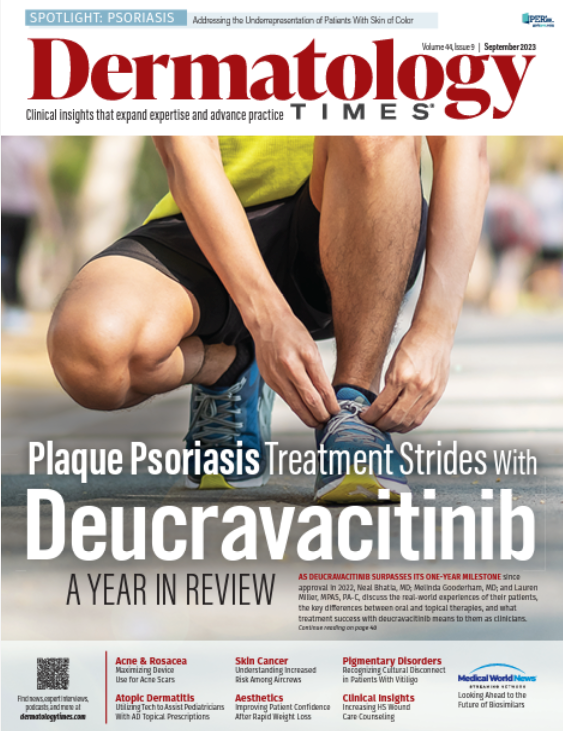
Newsletter
Like what you’re reading? Subscribe to Dermatology Times for weekly updates on therapies, innovations, and real-world practice tips.

